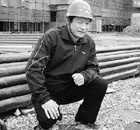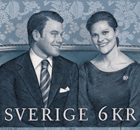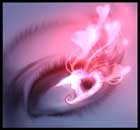Life
Thriving old alley lined with cultural ambience
By Li Jing (China Daily)
Updated: 2010-05-10 08:03
 |
Large Medium Small |

Fangjia Hutong, an ancient alley adjacent to the Lama Temple, is thriving as the city's next creative and cultural zone to challenge 798 Art Zone.
A walk between the dusty gray walls of Fang Family's hutong is often accompanied by the sound of reading from the Fangjia Hutong Primary School, under the watchful eyes of elderly residents on small wooden benches.
Though it is difficult to trace the Fang Family, the alley is much easier - it dates back to the Yuan Dynasty (1279-1368) and was home to numerous famous historical figures.
Among them was Prince Xun, Emperor Qianlong's third son. His mansions, located at buildings No 13 and 15, are well preserved but not open to the public.
Legendary novelist and playwright Lao She also lived in the hutong for two years as headmaster of the primary school.
And now new life is being breathed into the lethargic complex, with developments at the huge No 46 complex.
Under the moniker "Creative Neighborhood", the yard, formally part of China National Machine Tools Corp, has become a mini-hotbed of dining and cultural activity, as well as the base of the Beijing Modern Dance Company.
However, the booming business - still in its initial development - has met with some friction.
"Some local residents find our business interrupts their quiet and slow pace of life," said Pan Haiyi, manager of Paper Talk, a store selling various paper goods since June 2008.
As a result, many stores in the hutong have changed ownership several times due to public disinterest, she said, adding that unlike a mall, shopping in a hutong is conducted at a much slower pace.
"The experience provides the feeling of tranquility and history," she said.
Pan was also not too optimistic about the proposed identity of the hutong as a cultural and creative hub.
"We've seen several restaurants arrive, but few boutiques and galleries," she said.







